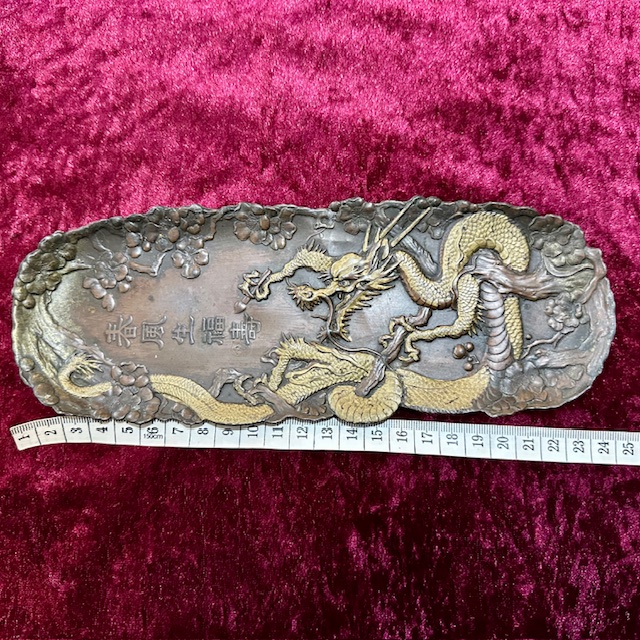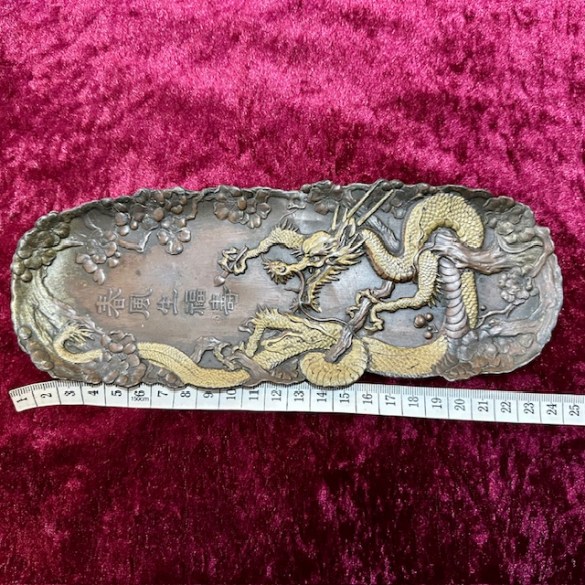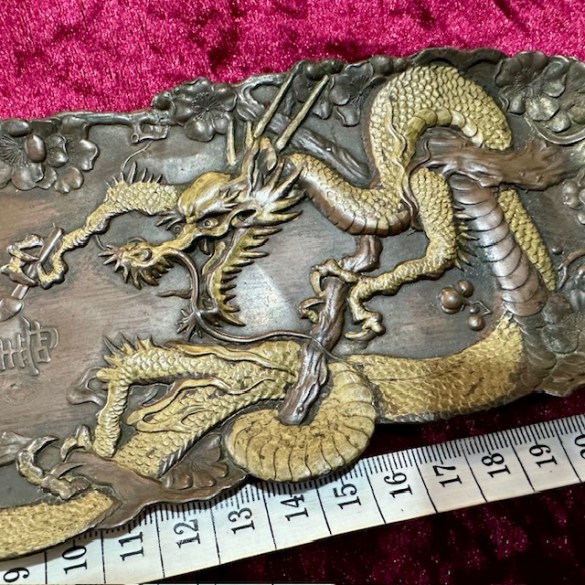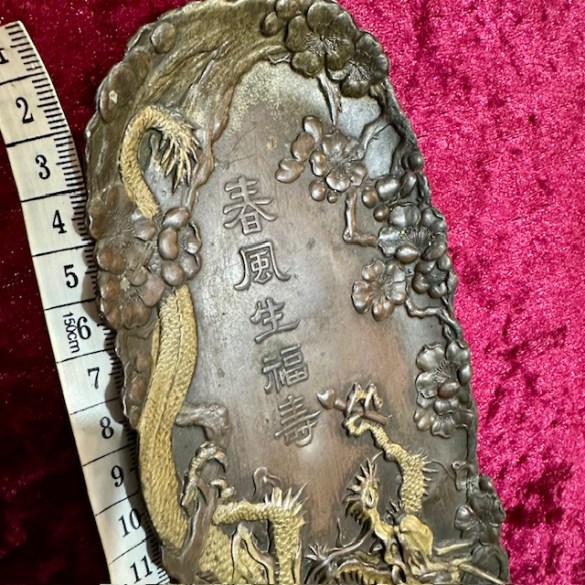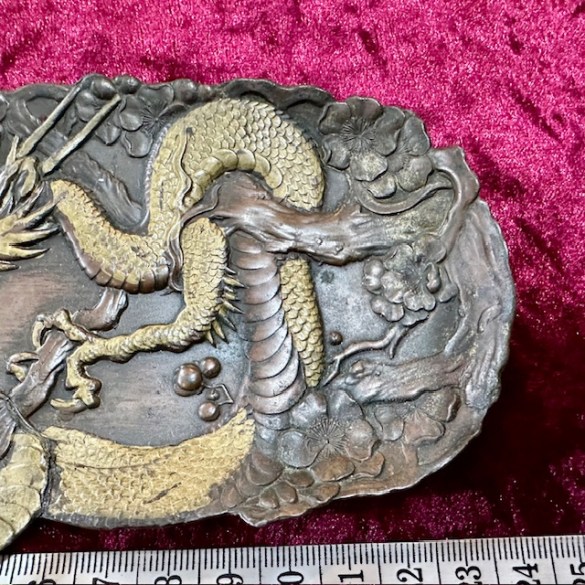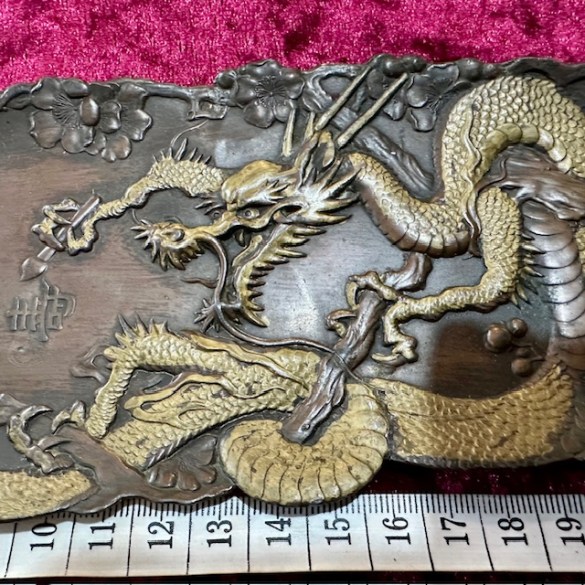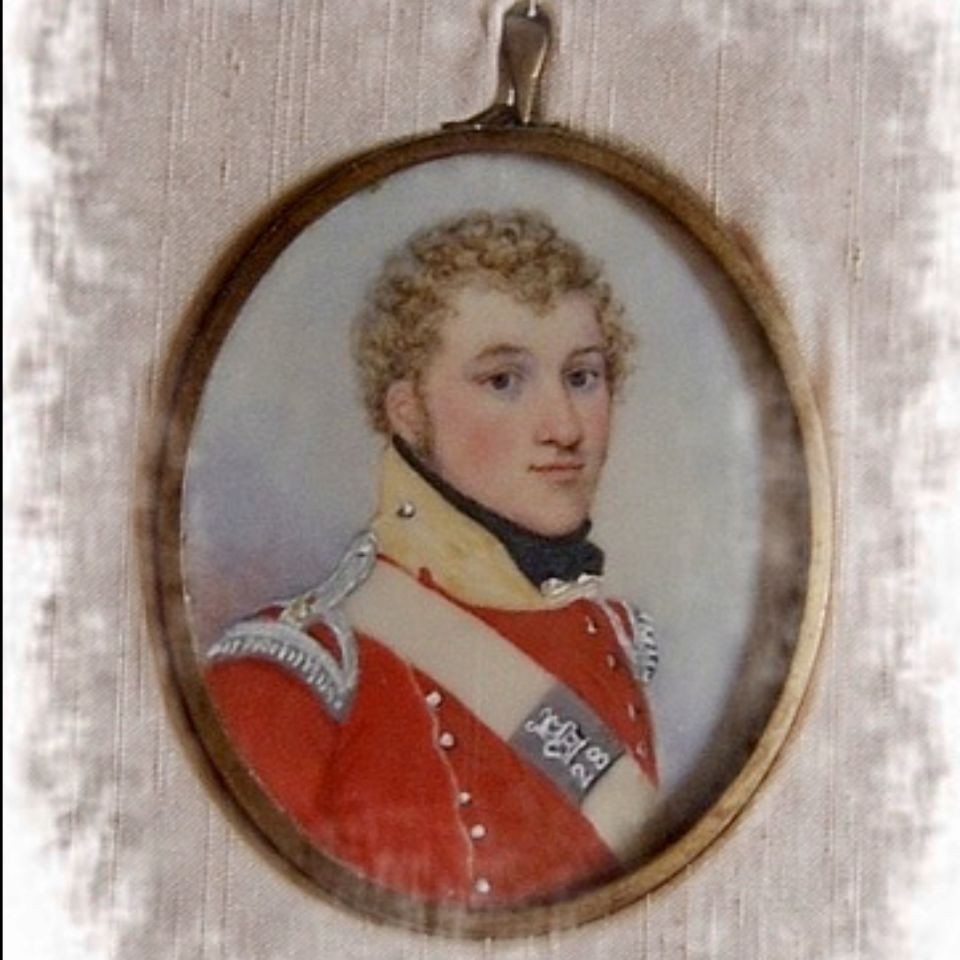Ref: Antique Japanese Meiji Period (1868-1912) Mixed Metal Repoussé Tray.
A lovely example beautifully detailed and repoussé in design.
Text translates to 'Spring Breeze'.
In Japanese, 'spring breeze' can be translated as 'harukaze'. The word combines "haru" (春), meaning spring, and "kaze" (風), meaning wind. The concept of the spring breeze is deeply ingrained in Japanese culture, often associated with renewal, the blooming of cherry blossoms (hanami), and the awakening of nature after winter.
- 春 (haru): This kanji character signifies spring.
- 風 (kaze): This kanji character signifies wind.
- 春風 (harukaze): The combination of these two characters creates the term for "spring breeze."
UK mainland postage included.

